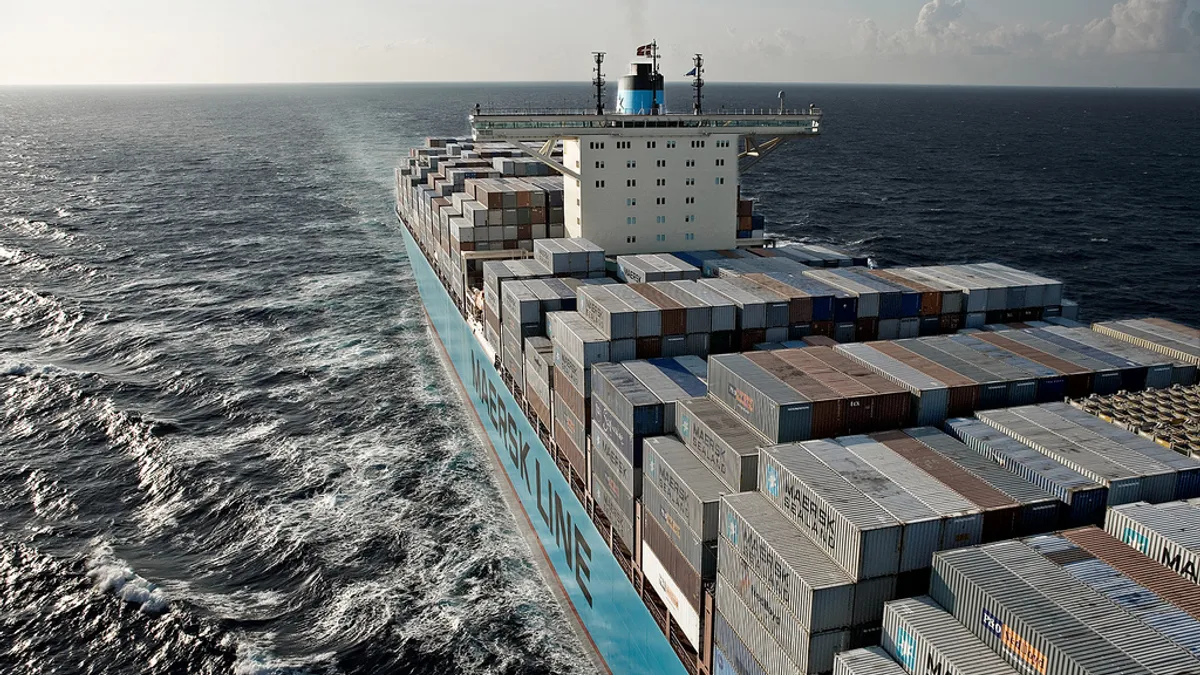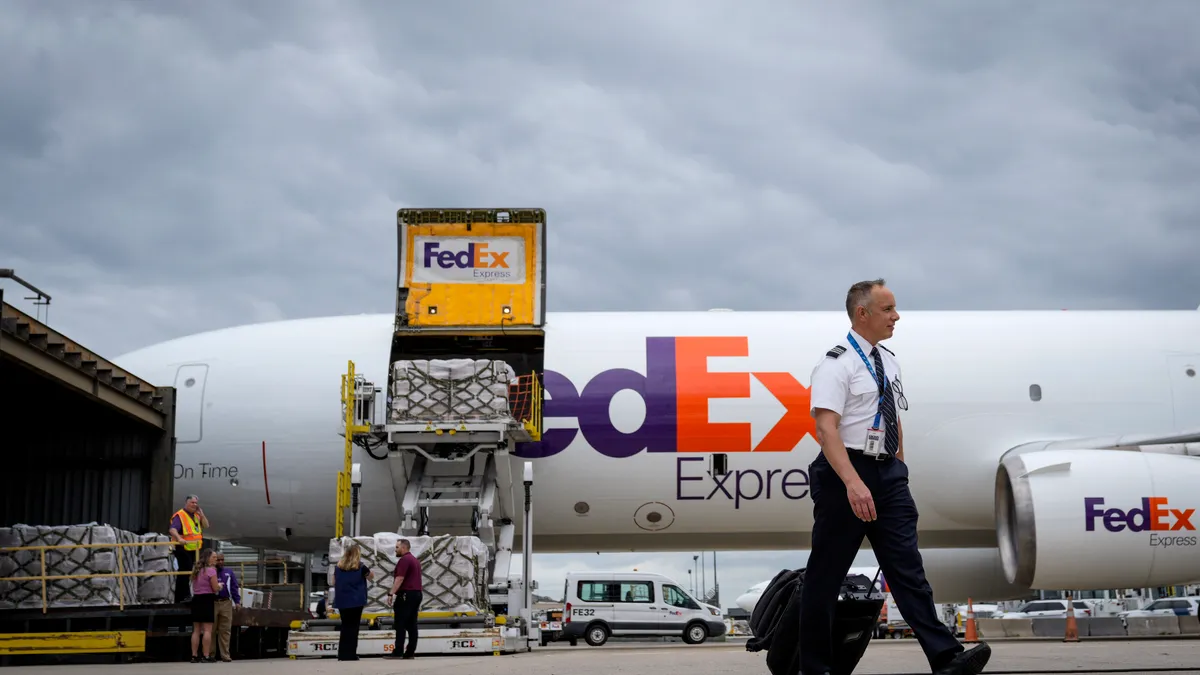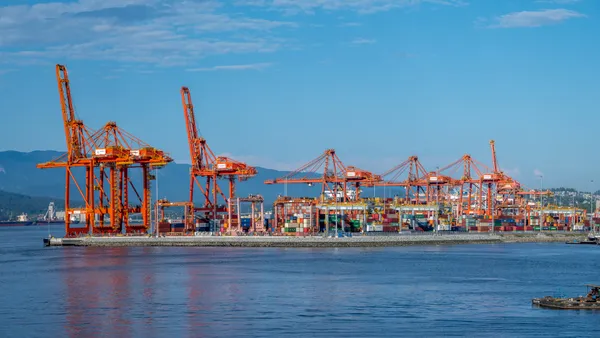UPDATE: March, 20, 2020: Maersk suspended its 2020 earnings guidance Friday, citing "material uncertainties and lack of visibility related to the global demand for container transport" in light of the global response to COVID-19, according to a company release. The carrier is upholding its previously stated guidance for 2020 volume. The company will reissue full-year earnings guidance "as soon as we have more clarity," CEO Søren Skou said.
Dive Brief:
- Maersk moderated its previously-stated volume expectations on an earnings call Thursday due to prevailing uncertainty regarding the impact of the COVID-19 outbreak in China. The carrier expects volume growth in line or slightly lower "than the estimated average market growth of 1-3% for 2020," according to earnings materials.
- Weak demand in East-West and North-South routes drove volume loss in 2019. Maersk's East-West volume dropped 5.7% in Q4 2019. Total volume was down 1.8% for the full year 2019 and was down 3.4% year-over-year for Q4.
- Global ocean freight demand growth dropped to 1.4% for the whole of 2019, down from 1.5% in Q3 and 2% in Q2. Demand growth for the fourth quarter was flat.
Dive Insight:
COVID-19, an illness in the coronavirus family, is the most immediate source of uncertainty for ocean freight stakeholders. Maersk CEO Søren Skou pointed out on the call that the outbreak affects not just ship traffic but Maersk's considerable logistics and terminal business in China.
The CEO said factories are operating at 50% to 60% capacity and will likely reach 90% capacity in the first week of March, with the outbreak peaking in two to three weeks — mirroring the SARS outbreak form 2003 in timing and recovery. But the global economic impact is expected to be more significant due to the dramatically increased extent to which China is integrated into global supply chains today.
"There is a scenario unfolding now that looks like a v-shaped recovery ... but this is not the kind of viability that we would like to have and there are still plenty of risks out there," Skou said.
A "v-shaped" recovery, as described by Skou, means the virus stays largely confined within China so that new cases dwindle over time without new outbreaks elsewhere. In that scenario, February and March results will be weak for all businesses operating in China, but a return to normal operations in April and May will make up some of the losses.
Carriers have responded to the outbreak with blank sailings into North America and Northern Europe as a result of lower demand. As of Wednesday, carriers had announced 20 additional blank sailings between weeks six and nine in North America and 15 additional blank sailings between weeks six to 10 in Northern Europe, according to numbers provided by Flexport.
Carriers forecast fewer blank sailings in the North American market for week 10, "which could imply a volume surge coming out of China eventually," Cate DeBenedictis, the communications manager for Flexport, told Supply Chain Dive in an email.
Beyond COVID-19, economic factors may already be exerting greater than expected pressure on shipping volume, as Maersk reported less than 1% loaded volume growth for the whole of 2019, after projecting a 1%-2% increase.
Shippers can expect some volatility in spot market rates. Regarding contract rates, Skou said half the carrier's contracts were negotiated before Lunar New Year and those fell within expectations. The other half of negotiations have yet to resume and will do so in a very weak environment.
Matt Leonard contributed to this report.














